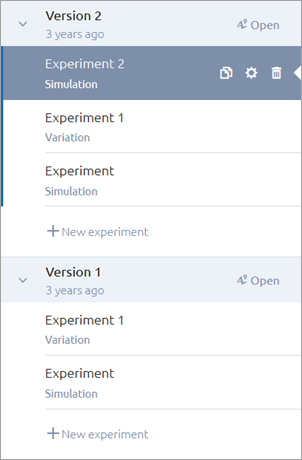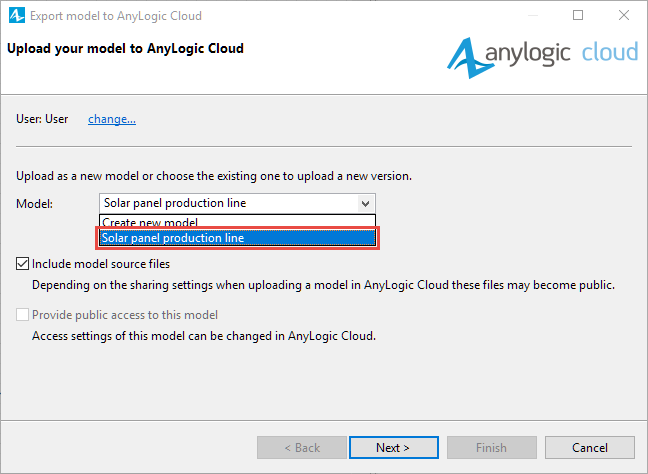Applies to AnyLogic Cloud 2.6.1. Last modified on December 11, 2025.
A model version in AnyLogic Cloud represents a specific state of the model, with its own unique set of experiments.
When working with a model in AnyLogic Cloud, you can view and switch between existing versions and their experiments using the model sidebar:

The Versions tab on the model screen shows all existing versions of a specific model in a table view.

A model version uploaded from the AnyLogic 8 desktop installation can be used to create a set of experiments based on a single model. The experiments in this set will include different sets of inputs and outputs.
With early access to the AnyLogic web model editor, available with AnyLogic Cloud 2.5.1, you can create new model versions directly in the browser and modify the model’s logic and layout.
To upload a new model version from AnyLogic desktop
-
Select an existing model in the Model drop-down list of the Export model to AnyLogic Cloud wizard:

The table consists of the following columns:
- Name — The name of the version.
- Modified — The date and time the version was last modified. Also includes the clickable name of the user who made the changes, which links to their profile.
- Sources — If available, contains the download links for the model source files.
- Actions — A number of commands to manage versions; see below.
To rename a model version
- Hover the mouse pointer over the version name.
-
Click in the field, or
Click the icon that appears on the right. - Enter a new name for the version.
- Once ready, click anywhere outside of the version name field.
To download a model version
- Click the Download button on a version’s row in the Sources column.
To manage your versions, use action buttons in the rightmost column of the table:
|
|
Create a copy of the version. |
| Edit | Edit the model version in the AnyLogic web editor. |
|
|
Delete the model version.
You cannot delete the only remaining version of the model.
|
-
How can we improve this article?
-

